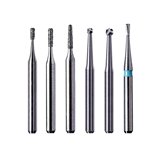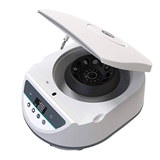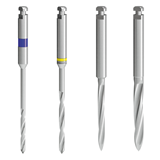When it comes to maintaining optimal dental hygiene, regular cleaning and sterilization of dental instruments and equipment are of utmost importance. Dental ultrasonic cleaners have emerged as a highly effective and efficient solution for dental professionals. In this comprehensive buying guide, we will explore the numerous benefits of dental ultrasonic cleaners and provide valuable insights to help you make an informed purchasing decision.
Introduction to Dental Ultrasonic Cleaners and Their Role in Dental Practices
In dental practices, maintaining proper hygiene and sterilization of dental instruments is of utmost importance to ensure the safety and well-being of both patients and dental professionals. Dental ultrasonic cleaners have emerged as a valuable tool in achieving effective cleaning and disinfection of dental instruments. In this introduction, we will explore what dental ultrasonic cleaners in Brisbane are and their crucial role in dental practices.


Find the right Dental Ultrasonic Cleaner
Compare quotes from expert Australian suppliers and make the best choice. It's free, quick and easy!
What are Dental Ultrasonic Cleaners?
Dental ultrasonic cleaners are specialized devices designed to clean dental instruments through the use of ultrasonic waves. These cleaners consist of a tank filled with a cleaning solution, where dental instruments are immersed for a specified period. When activated, the cleaner generates high-frequency sound waves that create microscopic bubbles in the cleaning solution. As these bubbles implode, they create a gentle yet powerful scrubbing action that dislodges debris, contaminants, and microorganisms from the surfaces of the instruments.
The Role of Dental Ultrasonic Cleaners
Dental ultrasonic cleaners play a vital role in dental practices by ensuring thorough cleaning and disinfection of dental instruments. Properly cleaned instruments are essential to prevent the transmission of infections and maintain a sterile environment. Ultrasonic cleaners are effective in removing various types of contaminants, including blood, saliva, plaque, and bacteria, which may be present on dental instruments after procedures.
Advantages of Dental Ultrasonic Cleaners
Dental ultrasonic cleaners offer several advantages that make them an integral part of dental practices:
- Efficient Cleaning: The scrubbing action created by ultrasonic waves reaches even the most inaccessible areas of dental instruments, ensuring thorough cleaning that may not be achievable through manual cleaning alone.
- Time Savings: Ultrasonic cleaners automate the cleaning process, reducing the time and effort required for manual cleaning. This allows dental professionals to focus on other important tasks, improving overall efficiency in the practice.
- Gentle on Instruments: Despite their powerful cleaning action, ultrasonic cleaners are gentle on dental instruments, minimizing the risk of damage or wear. This extends the lifespan of instruments, reducing the need for frequent replacements.
- Enhanced Infection Control: Ultrasonic cleaning effectively removes bacteria, viruses, and other microorganisms from dental instruments, reducing the risk of cross-contamination and ensuring a sterile environment for patients.
- Versatility: Dental ultrasonic cleaners can accommodate various types of dental instruments, including instruments made of metal, plastic, or glass. They are suitable for cleaning a wide range of instruments, such as probes, forceps, mirrors, and orthodontic appliances.
- User-Friendly Operation: Ultrasonic cleaners are designed for ease of use, with simple controls and settings. Dental professionals can easily adjust cleaning parameters based on instrument type and level of contamination, ensuring optimal cleaning results.
Comparison of Different Types of Dental Ultrasonic Cleaners and Their Suitability for Specific Dental Applications
Dental ultrasonic cleaners come in various types, each offering unique features and benefits. Understanding the different types and their suitability for specific dental applications can help you choose the most appropriate cleaner for your practice. In this comparison, we will assess different types of dental ultrasonic cleaners and their suitability for specific dental applications.
Type A: Benchtop Ultrasonic Cleaners
- Features: Compact design, ideal for limited space
- Cleaning Capacity: Suitable for small to medium-sized instruments
- Frequency Range: 40 kHz
- Suitable for: General dental practices, orthodontic practices, and small-scale dental clinics with a moderate instrument volume. Benchtop ultrasonic cleaners are versatile and can clean various instruments, including probes, mirrors, and small instruments.
Type B: Freestanding Ultrasonic Cleaners
- Features: Large capacity, standalone units
- Cleaning Capacity: Suitable for high-volume instrument cleaning
- Frequency Range: 35 kHz
- Suitable for: Busy dental practices, dental labs, and large-scale dental clinics that require frequent and thorough cleaning of a large number of instruments. Freestanding ultrasonic cleaners are designed to handle heavy contamination and larger instruments, making them suitable for practices with a higher instrument volume.
Type C: Dual-Tank Ultrasonic Cleaners
- Features: Two separate tanks for cleaning and rinsing
- Cleaning Capacity: Suitable for instruments that require a separate rinsing step
- Frequency Range: 28 kHz
- Suitable for: Practices that require a distinct rinsing step for instruments after cleaning, such as endodontic practices or practices with a focus on delicate instruments. Dual-tank ultrasonic cleaners allow for efficient cleaning followed by a thorough rinsing, ensuring optimal cleanliness of the instruments.
Type D: Combination Ultrasonic Cleaners
- Features: Combination of ultrasonic cleaning and other functions (e.g., steam sterilization)
- Cleaning Capacity: Suitable for comprehensive instrument cleaning and sterilization
- Frequency Range: Varies based on the specific combination functions
- Suitable for: Practices that require a complete instrument cleaning and sterilization solution, such as oral surgery practices. Combination ultrasonic cleaners offer a convenient and efficient way to clean and sterilize instruments in a single unit, saving time and streamlining the sterilization process.
Type E: Portable Ultrasonic Cleaners
- Features: Compact, lightweight, and portable design
- Cleaning Capacity: Suitable for small instruments and on-the-go cleaning needs
- Frequency Range: Varies depending on the specific model
- Suitable for: Mobile dental practices, dental professionals who require portable cleaning solutions, or specific cleaning needs during dental conferences or outreach programs. Portable ultrasonic cleaners offer convenience and flexibility for dental professionals on the move.
The choice of a specific type of dental ultrasonic cleaner will depend on the unique requirements and preferences of your dental practice. Consider the volume of instruments, the types of instruments used, and the specific cleaning needs to determine the most suitable type of cleaner for your practice.


Find the right Dental Ultrasonic Cleaner
Compare quotes from expert Australian suppliers and make the best choice. It's free, quick and easy!
Importance of Using Ultrasonic Cleaners for Effective Dental Instrument Cleaning
Maintaining proper cleanliness and sterilization of dental instruments is essential in dental practices to ensure optimal patient care and safety. While manual cleaning methods have their limitations, utilizing ultrasonic cleaners offers significant advantages for effective dental instrument cleaning. Let's explore the importance of using ultrasonic cleaners in dental practices.
-
Thorough Cleaning of Dental Instruments
One of the primary benefits of ultrasonic cleaners is their ability to provide thorough cleaning of dental instruments. The powerful scrubbing action created by the ultrasonic waves reaches even the smallest crevices and hard-to-reach areas of instruments. This ensures the removal of debris, contaminants, and microorganisms that may be missed during manual cleaning, resulting in a higher level of cleanliness.
-
Efficient and Time-Saving Cleaning Process
Ultrasonic cleaners streamline the cleaning process and save valuable time in dental practices. Compared to manual cleaning methods, which can be labor-intensive and time-consuming, ultrasonic cleaners automate the cleaning process. Dental instruments can be placed in the cleaner, and the ultrasonic waves will do the work, allowing dental professionals to focus on other important tasks. This efficiency enhances productivity and workflow in the practice.
-
Gentle Cleaning Action for Instrument Protection
While ultrasonic cleaners provide powerful cleaning action, they are also gentle on dental instruments. The scrubbing action occurs at a microscopic level, ensuring that delicate instruments are not subjected to harsh mechanical scrubbing that can cause damage or wear. This gentle cleaning action helps to prolong the lifespan of dental instruments, reducing the need for frequent replacements and ultimately saving costs.
-
Enhanced Infection Control and Patient Safety
Effective cleaning and disinfection of dental instruments are vital for infection control and patient safety. Ultrasonic cleaners excel in this aspect by thoroughly removing bacteria, viruses, and other microorganisms from the surfaces of instruments. The cavitation process created by the ultrasonic waves disrupts and dislodges biofilms and contaminants, reducing the risk of cross-contamination and the spread of infectious agents.
-
Compliance with Sterilization Standards and Regulations
Using ultrasonic cleaners in dental practices helps ensure compliance with sterilization standards and regulations set by dental associations and regulatory bodies. These standards outline the recommended cleaning and sterilization protocols for dental instruments. By incorporating ultrasonic cleaning into the workflow, dental professionals can meet and exceed these guidelines, maintaining a high standard of instrument cleanliness and patient safety.
-
Improved Efficiency and Cost Savings
Investing in ultrasonic cleaners brings long-term efficiency and cost savings to dental practices. The thorough cleaning provided by ultrasonic cleaners reduces the likelihood of instrument recontamination and the need for re-cleaning, minimizing the risk of procedural complications. Additionally, prolonging the lifespan of dental instruments through proper cleaning and maintenance reduces the frequency of instrument replacements, resulting in significant cost savings over time.
Factors to Consider When Purchasing a Dental Ultrasonic Cleaner
Purchasing a dental ultrasonic cleaner is a significant investment for dental practices. To ensure you choose the right ultrasonic cleaner that meets your specific needs, it's important to consider several factors. Here are key factors to consider when purchasing a dental ultrasonic cleaner:
1. Frequency
The frequency of an ultrasonic cleaner refers to the number of cycles per second at which the cleaner operates. Ultrasonic cleaners commonly operate at frequencies between 20 kHz and 45 kHz. Higher frequencies generally offer more intense cleaning action, making them suitable for removing tough contaminants. However, delicate instruments may require lower frequencies to prevent damage. Consider the types of instruments you will be cleaning and choose a frequency that matches your specific requirements.
2. Tank Capacity
The tank capacity of an ultrasonic cleaner determines the number of instruments that can be cleaned at once. Assess your practice's needs based on the volume of instruments you typically clean in a single cycle. A larger tank capacity allows for cleaning a greater number of instruments simultaneously, increasing efficiency. However, if space is limited or your instrument volume is relatively low, a smaller tank capacity may suffice. Strike a balance between capacity and your practice's requirements.
3. Cleaning Power and Efficiency
Consider the cleaning power and efficiency of the ultrasonic cleaner. Look for features such as adjustable power levels or cleaning cycles to accommodate different instrument types and contamination levels. The cleaner should offer sufficient power to remove debris effectively while minimizing the risk of damage to delicate instruments. Opt for a cleaner that provides consistent and reliable cleaning performance to ensure optimal results.
4. Timer and Programmable Features
Having a timer and programmable features can be advantageous in an ultrasonic cleaner. A built-in timer allows you to set the cleaning cycle duration, ensuring consistent and controlled cleaning times. Programmable features enable customization of cleaning parameters for specific instrument types or contamination levels. These features enhance versatility and flexibility in meeting your practice's specific cleaning requirements.
5. Heating Function
Some ultrasonic cleaners come with a heating function that can improve cleaning effectiveness. The ability to heat the cleaning solution helps to dissolve stubborn contaminants and improve the overall cleaning process. Consider whether a heating function is necessary for your practice and choose an ultrasonic cleaner with the desired heating capabilities.
6. Quality and Durability
Invest in an ultrasonic cleaner that is built with high-quality materials and components. The cleaner should be durable and able to withstand regular use in a dental practice setting. Look for reputable brands or models with positive customer reviews to ensure reliability and longevity. Investing in a well-built ultrasonic cleaner will save you from frequent repairs or replacements in the long run.
7. Ease of Use and Maintenance
Consider the user-friendliness of the ultrasonic cleaner. Look for intuitive controls and clear instructions to facilitate easy operation. The cleaner should also be easy to maintain, with removable and easy-to-clean tanks or baskets. Consider the overall maintenance requirements, such as frequency of solution changes or filter replacements, to ensure smooth operation and longevity of the cleaner.
8. Safety Features
Safety is paramount when working with ultrasonic cleaners. Look for safety features such as automatic shut-off when the cleaning cycle is complete or when the water level is too low. Additionally, ensure that the ultrasonic cleaner meets safety standards and regulations to provide a secure working environment for dental professionals.
9. Budget
Finally, consider your budget when purchasing a dental ultrasonic cleaner. Determine the features and specifications that are essential for your practice and find a cleaner that offers a balance between price and functionality. While it's important to consider cost, prioritize the quality, performance, and durability of the cleaner to ensure a worthwhile investment.
Expert Recommendations on Selecting the Right Ultrasonic Cleaner Based on Needs and Budget
Choosing the right ultrasonic cleaner for your dental practice is crucial to ensure effective instrument cleaning while considering your budgetary constraints. Here are expert recommendations to help you select the right ultrasonic cleaner based on your needs and budget:
- Assess Your Practice's Cleaning Needs: Evaluate the volume and types of instruments you regularly clean. Consider the size and complexity of instruments, as well as the level of contamination. This assessment will help determine the cleaning capacity and frequency requirements of the ultrasonic cleaner
- Consider the Frequency and Power: Select an ultrasonic cleaner with an appropriate frequency range and power output based on your cleaning needs. Higher frequencies (e.g., 40-45 kHz) are effective for general cleaning, while lower frequencies (e.g., 25-35 kHz) are suitable for heavy contamination or delicate instruments. Choose a cleaner with adjustable power settings to accommodate various cleaning requirements
- Evaluate Tank Capacity: Determine the ideal tank capacity based on the number and size of instruments you clean in a single cycle. Smaller tanks are suitable for low-volume practices or specific applications, while larger tanks accommodate high-volume instrument cleaning. Find the right balance between capacity and your practice's needs to optimize efficiency.
- Consider Essential Features: Identify the essential features you require in an ultrasonic cleaner. This may include programmable cleaning cycles, a timer function, heating capabilities, or safety features such as automatic shut-off. Prioritize features that align with your practice's specific needs and promote efficient and safe operation.
- Quality and Durability: Invest in a high-quality ultrasonic cleaner from a reputable manufacturer. Quality construction ensures longevity, reliable performance, and reduced maintenance costs in the long run. Read customer reviews and seek recommendations to assess the reputation and reliability of different models.
- Ease of Use and Maintenance: Look for an ultrasonic cleaner with user-friendly controls and intuitive interfaces. Consider how easy it is to clean and maintain the cleaner, including removable tanks, accessible drainage systems, and easy-to-replace components. This saves time and effort during daily use and maintenance routines.
- Budget Considerations: Set a budget range for your ultrasonic cleaner purchase. While it's important to consider cost, prioritize the overall value and long-term benefits. Focus on finding a balance between your budget and the features and quality of the cleaner. Consider the return on investment in terms of improved efficiency, reduced instrument damage, and extended instrument lifespan.
- Warranty and Customer Support: Ensure the ultrasonic cleaner comes with a warranty that provides adequate coverage. Reliable customer support is also essential for prompt assistance in case of technical issues or maintenance needs. Verify the warranty terms and availability of customer support before making your final decision.
In conclusion, dental ultrasonic cleaners are indispensable tools in maintaining optimal dental hygiene and ensuring the safety of both patients and dental professionals. These cleaners offer numerous benefits, including efficient and thorough cleaning of dental instruments, time savings, gentle cleaning action, enhanced infection control, and versatility in accommodating various instrument types. When purchasing a dental ultrasonic cleaner, it is important to consider factors such as frequency, tank capacity, cleaning power, programmable features, heating function, quality, ease of use and maintenance, safety features, and budget. By carefully evaluating your practice's needs and considering expert recommendations, you can select the right ultrasonic cleaner that meets your requirements and provides long-term value. Ultimately, incorporating an ultrasonic cleaner into your dental practice contributes to effective instrument cleaning, compliance with sterilization standards, improved efficiency, and cost savings.
















